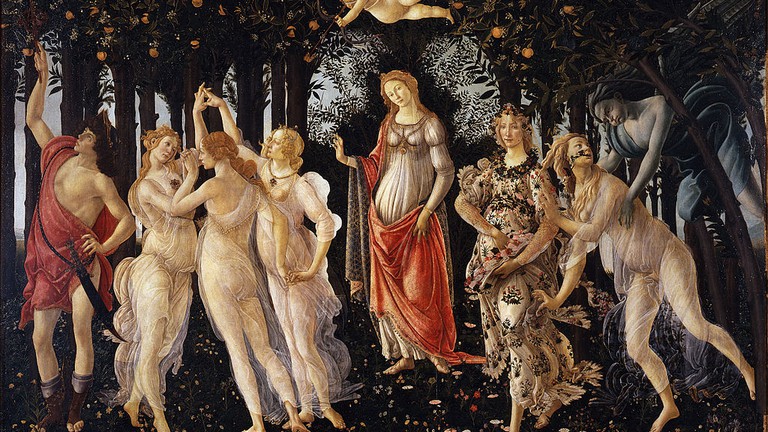Two Words
 You'll need 3-6 players for this game, plus a number of index cards or other note papers: start by discussing two words that you want to use as a group to underpin the game. These should be chosen to inform the setting, tone and theme, so you might choose 'Venetian' and 'Enchantment', 'Wilderness' and 'Haunting', 'Cyberpunk' and 'Aztec' or whatever combination your group likes. Everyone should suggest a word to be a Foundation of play, then vote on the two you want to use and discuss very briefly the outline of the setting they suggest.
You'll need 3-6 players for this game, plus a number of index cards or other note papers: start by discussing two words that you want to use as a group to underpin the game. These should be chosen to inform the setting, tone and theme, so you might choose 'Venetian' and 'Enchantment', 'Wilderness' and 'Haunting', 'Cyberpunk' and 'Aztec' or whatever combination your group likes. Everyone should suggest a word to be a Foundation of play, then vote on the two you want to use and discuss very briefly the outline of the setting they suggest.
Foundation: one of the two terms used to underpin the setting of the game and summarise it; write each one boldly so that it fills a whole index card and place them centrally so that all players can see them.
Terms of Play
Next, everyone names a term that will be important in that setting but does not define it; take it in turns to do this, naming the term you want to feature in the game and writing it down at the top of an index card. A term may describe either an Identity or an Intangible, but other than that you can use any word you like except proper names. Singular, collective and compound nouns make great Identities, while adjectives and abstract nouns make better Intangibles.
Identity: a singular person, place or organisation that is important to the setting; write it with a capital letter and always refer to it as 'The', e.g. 'The Convocation', 'The Tiger', 'The Blade', etc.
Intangible: a philosophy, movement, force or power that is important to the setting; write it in italics and always refer to it in the abstract, e.g. 'thaumaturgy', 'grandeur', 'sibilance', etc.
At this stage, only write down the term itself, don't try to define, expand or explain it; also, anyone whose suggested Foundation did not get chosen gets a second term, so some players will start with more than others.
Cut Scenes
Imagine the game taking place as a series of cut scenes, the sort of expository scene inserted into the narrative of a computer or console game to provide the player with goals or resolve them once reached. Collaborate as a group in creating each scene, but take it in turns to Author the scenes; the Author records or remembers the suggestions for elements of the scene and makes sure they are adhered to whilst the scene is played out.
Author: the player currently responsible for taking suggestions from all players for elements of a scene and making sure those elements then feature in the scene.
 When creating a scene, the Author should ask the other players to each contribute one element or more that should appear: an element can be a place, a theme, a character or an event, but not an Identity or Intangible. As Author, you can also suggest elements, but you should not fill the current scene with your own suggestions: work with the other players to incorporate their suggestions, then add your own flavour to the result.
When creating a scene, the Author should ask the other players to each contribute one element or more that should appear: an element can be a place, a theme, a character or an event, but not an Identity or Intangible. As Author, you can also suggest elements, but you should not fill the current scene with your own suggestions: work with the other players to incorporate their suggestions, then add your own flavour to the result.
For example, Camila, Valeria, Mateo and Lucas are playing the first scene in a game whose Foundations are 'Pastoral' and 'Fairytale', with Camila being the first Author. Valeria suggests a romantic tryst as an element for the scene and Lucas would like the character of a soldier recently returned from a distant war as a character. Mateo doesn't have an immediate suggestion for an element, but Camila proposes that one of the village farmboys should make an appearance, with the undertone that the romance might exist between the soldier and the farmboy, even if not explicit in the scene. Mateo asks if their might also be some fairy mischief present, playing with the fates and emotions of the two potential lovers, to which Valeria adds that perhaps another character could be a witch who is meddling for her own reasons. With no further suggestions forthcoming, Camila can announce the start of the scene.
To start a scene, each player chooses a character they want to portray during it or opts to provide colour & flavour commentary. Any characters added as elements must be played during the scene, unless it was clearly established that they only exist as an influence and are not directly present, e.g. if an element was a Queen's decree that she was seeking a champion, then the Queen herself does not necessarily have to appear.
If you opt to play a character, then you get the final say on their appearance, profession, motivation, etc, though you should remain open to suggestions from other players, especially the current Author, to make sure that everything gels. At least two players must play characters in the scene.
If you opt to provide commentary, then you are free to add details to the scene, through describing the location in more detail or narrating the actions or words of minor characters who also happen to be present, individually or en masse, e.g. the Queen's Royal Guard.
Definite Articles
Play out each scene incorporating the elements suggested for it, acting out the roles of characters and providing colourful commentary, until the Author chooses to make something decisive happen, which they can choose to do in two ways:
- Define a term: the Author chooses an undefined term from one of the index cards and writes a definition for it. This can be whatever they want, but it must be relevant to the scene and fit what has already been established; after doing this, they describe how that Identity or Intangible resolves the scene in such a way that at least one of the characters present clearly gets what they wanted from this scene by using the Identity or Intangible defined.
- Add a term: the Author writes a new term on a new index card and then narrates how at least one of the characters present is clearly thwarted from getting what they want (for now, anyway.) This narration should incorporate the new term but still without defining it any clear way.
- She might unite the two lovers, or describe how the witch tricks one of them into signing the fairy contract that will undo her own obligations; to do so, she can pick up the 'The Tiger' and define this as 'a bold general who has been richly honoured for his brave and unconventional tactics in the recent conflict,' then have that character suddenly arrive on the scene to create the conclusion she desires.
- She might keep the two lovers apart, or thwart the witch's current subterfuge by exposing her disguise, adding a new term like 'shadow' to a new index card and narrating how one of the characters fears the shadow (which remains undefined) and thus acts over-cautiously.


No comments:
Post a Comment